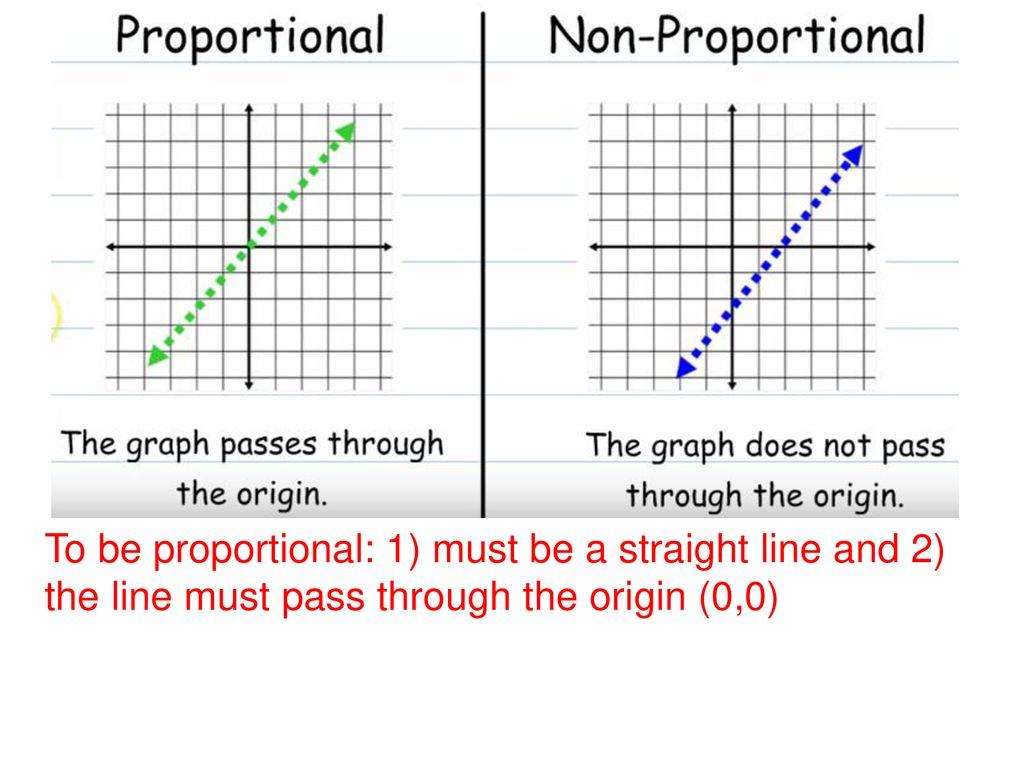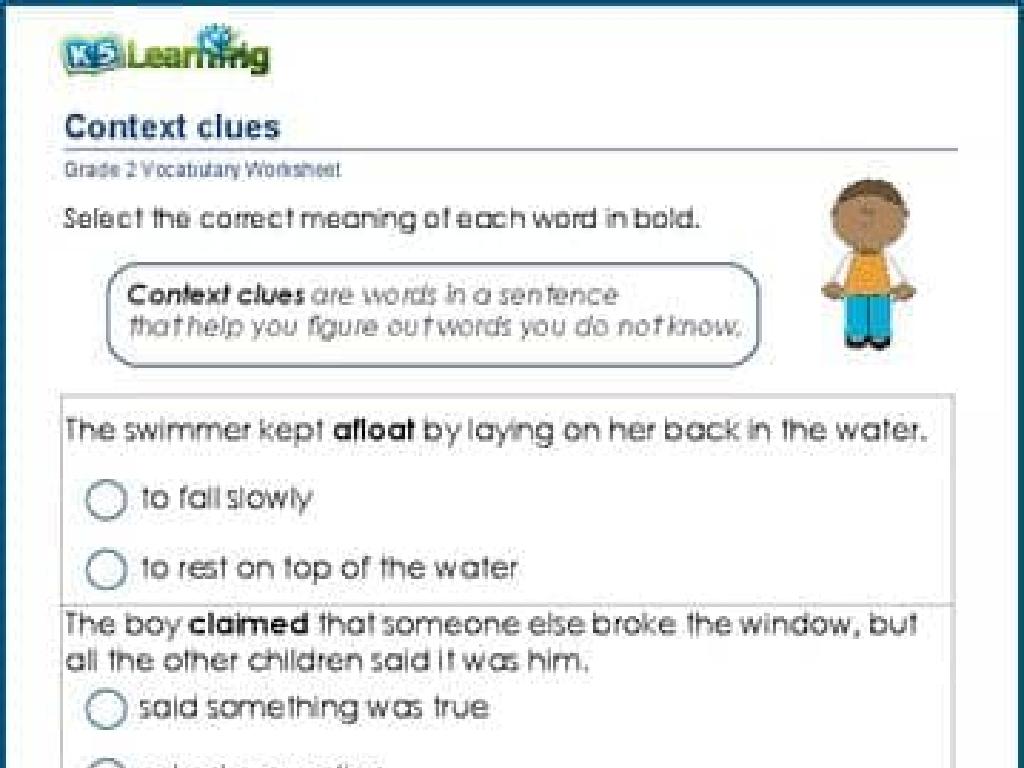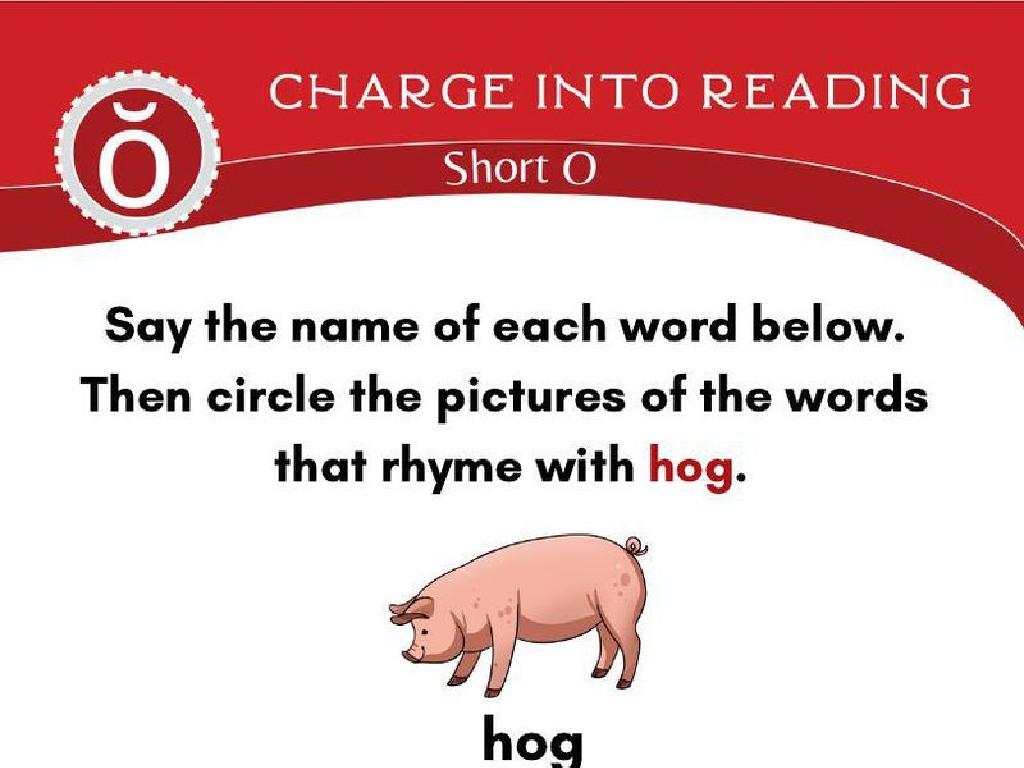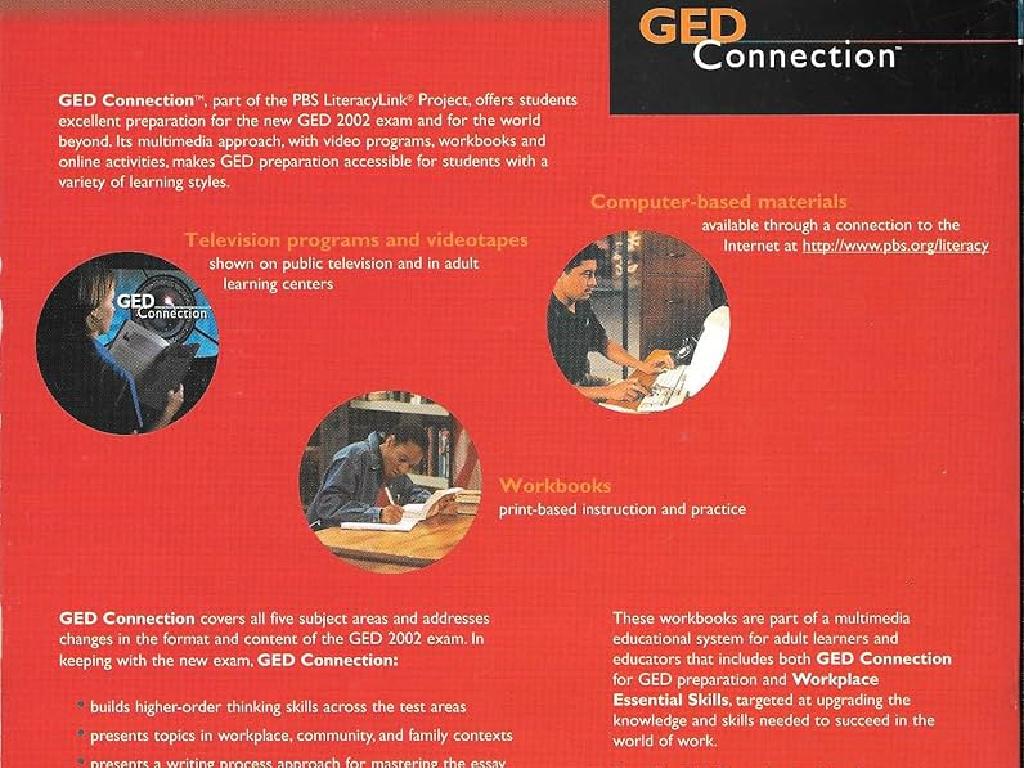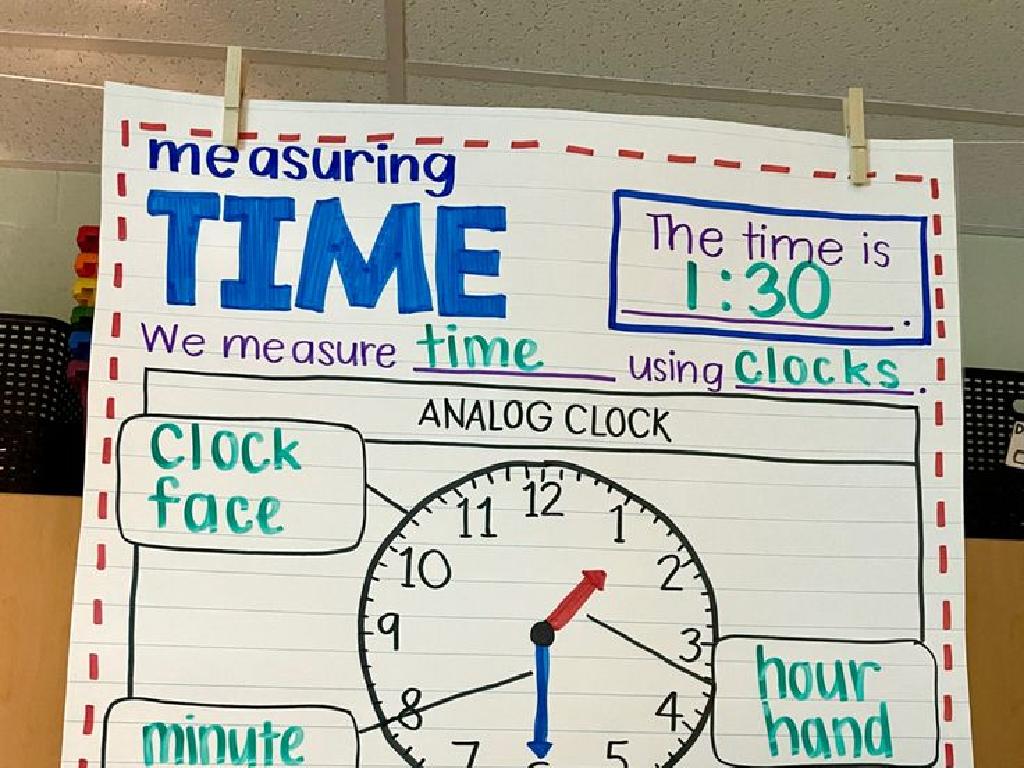Above And Below
Subject: Math
Grade: Kindergarten
Topic: Positions
Please LOG IN to download the presentation. Access is available to registered users only.
View More Content
Exploring Positions: Above and Below
– Learn ‘Above and Below’
– Find shapes above other shapes
– Is the circle above the square?
– Find shapes below other shapes
– Is the triangle below the rectangle?
– Fun position games
|
This slide introduces the concepts of ‘above’ and ‘below’ to Kindergarten students, which are basic positional words. Start by explaining that ‘above’ means higher or over something and ‘below’ means lower or under something. Use classroom objects to demonstrate these positions in a way that’s easy for young children to understand. For example, place a book above another book on a table, and then below it. Encourage the children to participate by asking them to identify objects in the classroom that are above or below others. Incorporate fun activities where children have to place shapes above or below each other to reinforce the concept. This interactive approach helps children grasp these positional words in a playful and engaging manner.
Understanding ‘Above’ in Positions
– ‘Above’ means higher up
– If something is above, it’s not on the ground.
– Like a bird over a tree
– Imagine a bird in the sky, higher than the tree.
– It’s not touching the top
– ‘Above’ is the opposite of ‘below’
– When we look up, we see things that are above.
|
This slide introduces the concept of ‘above’ to Kindergarten students. Start by explaining that ‘above’ means something is higher up or over something else, but not directly touching it. Use simple, relatable examples like a bird flying above a tree to illustrate the point. Make sure to clarify that ‘above’ indicates a position that is not on the ground and is the opposite of ‘below’. Encourage the children to look around the classroom and identify objects that are above other objects to reinforce the concept.
Understanding ‘Below’
– ‘Below’ means under
– When something is lower than another thing
– Example: Fish in water
– Imagine a fish swimming under the water’s surface
– ‘Below’ is the opposite of ‘above’
– Practice finding ‘below’
– Look around the room for examples
|
This slide introduces the concept of ‘below’ to Kindergarten students. Start by explaining that ‘below’ indicates a position lower than something else. Use a simple and relatable example, such as a fish swimming below the water surface, to illustrate the meaning. Highlight that ‘below’ is the opposite of ‘above’ to help them understand the relationship between the two positions. Encourage the students to practice by identifying objects in the classroom that are ‘below’ other objects. This activity will help solidify their understanding of the concept through real-life examples.
Let’s Find ‘Above and Below’
– Observe pictures for ‘above’ and ‘below’
– Point out objects ‘above’ other objects
– The bird is above the tree, the hat is above your head
– Identify objects ‘below’ other objects
– The shoes are below the table, the grass is below your feet
– Discuss your findings with a friend
|
This slide is designed to help Kindergarten students understand the spatial concepts of ‘above’ and ‘below’ through observation and discussion. Start by showing pictures that clearly depict objects in ‘above’ and ‘below’ positions. Encourage the students to point at and name objects that are ‘above’ something else, like a bird in the sky or a hat on a head. Then, have them identify objects that are ‘below’, such as shoes under a table or grass under their feet. After identifying these objects, ask the students to discuss their observations with a classmate to reinforce their understanding. This activity will help develop their spatial awareness and descriptive language skills.
Exploring Above and Below
– Find items above other items
– Look for a clock above the door or a light above your head
– Find items below other items
– Notice the carpet below your feet or a pencil below the desk
– Observe our classroom
– Share our findings
– Tell the class what you found
|
This slide is meant to engage Kindergarten students in a practical activity to understand the concepts of ‘above’ and ‘below.’ Encourage the children to look around the classroom and identify objects that are positioned above or below other objects. This will help them relate the concepts to real-world examples they see every day. As they find items, they can point them out and discuss their observations. The teacher should facilitate the activity by guiding the students’ attention to various objects and asking prompting questions to stimulate thinking and observation. After the activity, have a discussion where each student can share what they found and describe the position of items in relation to each other. This reinforces the vocabulary and the spatial concepts being taught.
Practice Time: Building Towers
– Build towers with blocks
– Place items above or below
– Use toys or objects to position
– Take turns explaining
– Understand ‘above’ and ‘below’
– ‘Above’ means over, ‘below’ means under
|
This activity is designed to help Kindergarten students grasp the concepts of ‘above’ and ‘below’ through a hands-on building exercise. Provide the children with blocks and a variety of small items to place in relation to their towers. Encourage them to use spatial language as they explain where they’ve placed items in relation to their towers. For example, ‘The teddy bear is above the blocks, and the car is below.’ This will reinforce their understanding of positional words in a fun and interactive way. Make sure to have enough materials for all students and consider pairing them up to foster collaboration. As they work, walk around the classroom to offer guidance and ensure each child gets a turn to share their creation with the class.
Above and Below Drawing Activity
– Draw a sun above the house
– Place a worm below the ground
– Add more items above and below
– Think of birds in the sky or fish in the water
– Use crayons for creativity
– Colors make your drawing lively
|
This slide introduces a drawing activity to help Kindergarten students understand the concepts of ‘above’ and ‘below’. Start by demonstrating how to draw a simple house on the lower part of the paper. Then, show them how to draw a sun in the upper part to represent ‘above’ and a worm at the bottom for ‘below’. Encourage the children to use their imagination to add more elements such as birds, planes, roots, or fish. Guide them to use different colors to make their artwork vibrant. This activity will help solidify their understanding of positional words through a fun and engaging art project. Make sure to walk around the classroom to assist and praise their efforts and creativity.
Class Activity: Above and Below Hunt
– Let’s go on an ‘above and below’ hunt
– Find a buddy for the adventure
– Use your worksheet to record findings
– Draw or write the examples you find
– Look for ‘above and below’ around us
– Is the bird above the tree or below?
|
This activity is designed to help Kindergarten students understand the concepts of ‘above’ and ‘below’ through a fun and interactive hunt. Teachers should pair up students, hand out worksheets, and guide them around the school to observe and record examples of objects or things that are positioned above or below other things. Encourage students to discuss their observations with their partners and use drawings or words to document on their worksheets. Possible examples: a clock above the door, a carpet below the table. This activity promotes teamwork, observation skills, and the practical application of positional words in a real-world context.
Great Job on ‘Above and Below’!
– Understanding ‘above and below’
– Identify objects ‘above’ your desk
– Is your pencil case or book above the desk?
– Find items ‘below’ your desk
– Are your shoes or backpack below the desk?
– ‘Above’ means up high, ‘below’ means down low
|
This slide is a conclusion to reinforce the concepts of ‘above’ and ‘below’ that the students have learned. Encourage the children to look around their classroom or think about their desk at home and identify items that are located above or below it. This exercise helps solidify their understanding of positional words in a familiar context. Remind them that ‘above’ refers to a higher position, while ‘below’ indicates a lower position. During the next class, ask the students to share their examples to ensure they can apply these terms correctly and understand their meaning in everyday situations.

